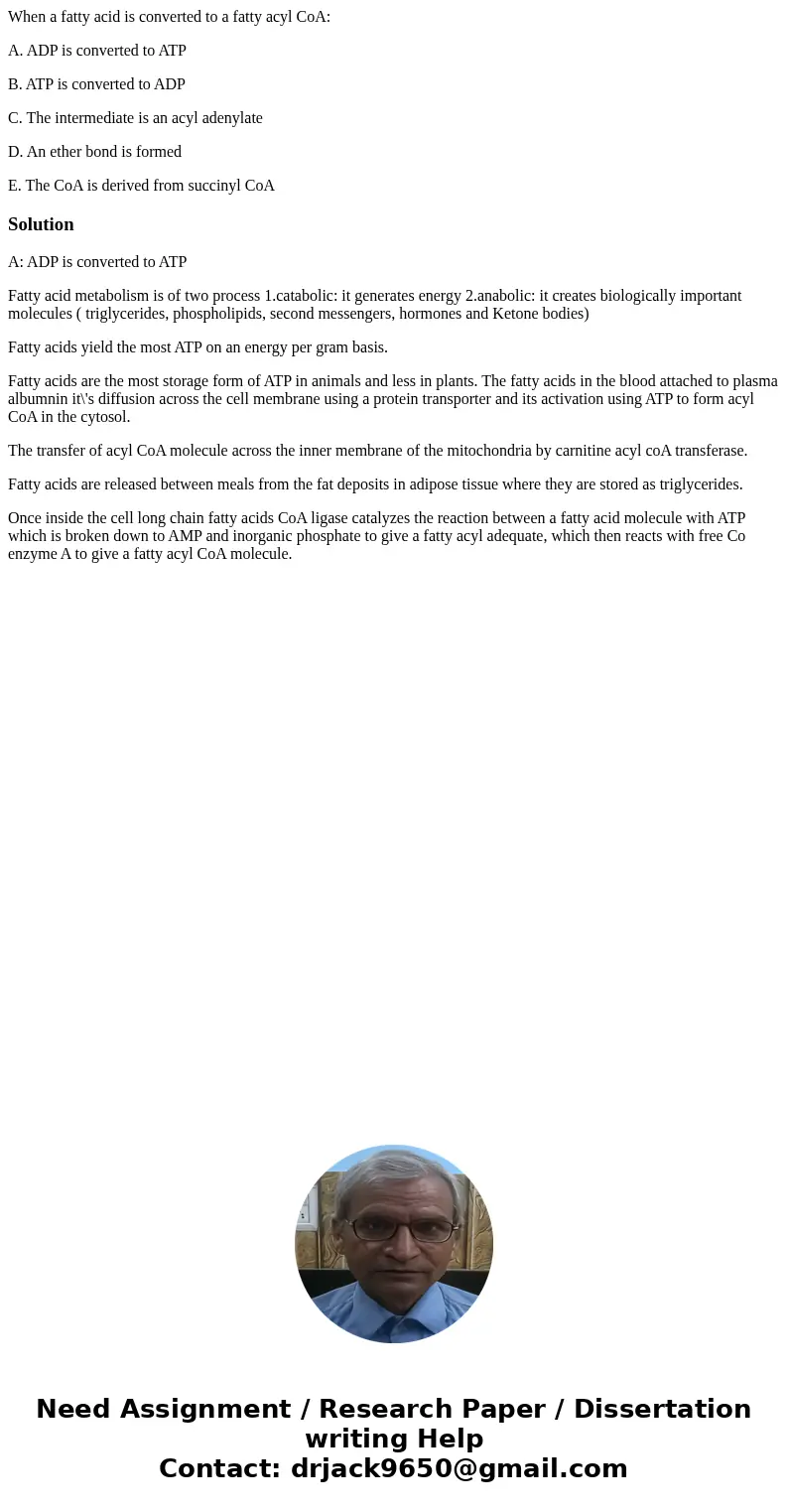When a fatty acid is converted to a fatty acyl CoA A ADP is
When a fatty acid is converted to a fatty acyl CoA:
A. ADP is converted to ATP
B. ATP is converted to ADP
C. The intermediate is an acyl adenylate
D. An ether bond is formed
E. The CoA is derived from succinyl CoA
Solution
A: ADP is converted to ATP
Fatty acid metabolism is of two process 1.catabolic: it generates energy 2.anabolic: it creates biologically important molecules ( triglycerides, phospholipids, second messengers, hormones and Ketone bodies)
Fatty acids yield the most ATP on an energy per gram basis.
Fatty acids are the most storage form of ATP in animals and less in plants. The fatty acids in the blood attached to plasma albumnin it\'s diffusion across the cell membrane using a protein transporter and its activation using ATP to form acyl CoA in the cytosol.
The transfer of acyl CoA molecule across the inner membrane of the mitochondria by carnitine acyl coA transferase.
Fatty acids are released between meals from the fat deposits in adipose tissue where they are stored as triglycerides.
Once inside the cell long chain fatty acids CoA ligase catalyzes the reaction between a fatty acid molecule with ATP which is broken down to AMP and inorganic phosphate to give a fatty acyl adequate, which then reacts with free Co enzyme A to give a fatty acyl CoA molecule.

 Homework Sourse
Homework Sourse